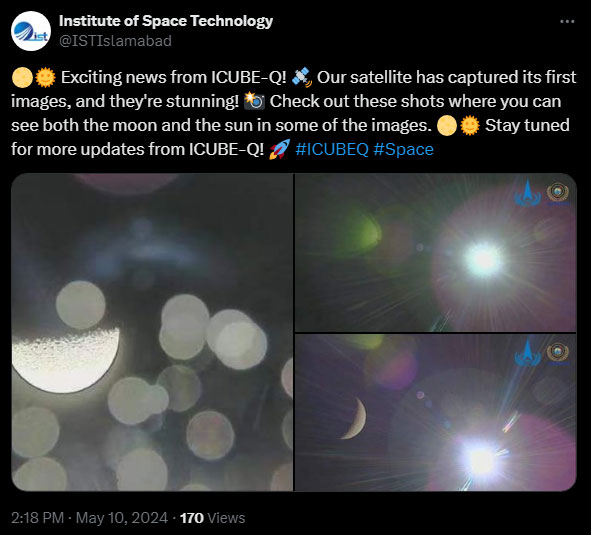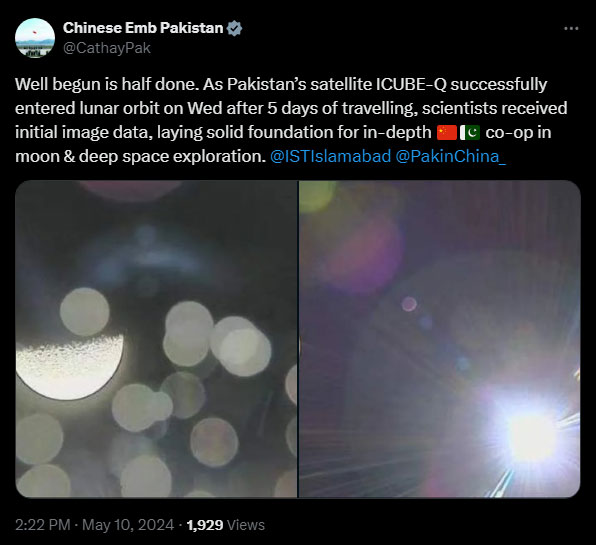iCube-Qamar sends first image of Moon from lunar orbit
"iCube-Qamar has made three rounds around the moon," says Institute of Space Technology
May 10, 2024

- Three images transmitted via iCube-Qamar so far.
- Satellite completed its rotation in orbit in 12 hours.
- It has made three rounds around moon, says IST.
iCube-Qamar, Pakistan's first satellite mission to the moon, sent the first-ever image of the moon captured in the lunar orbit, the Institute of Space Technology told Geo News on Friday.
Earlier, the satellite transmitted an image from the lunar orbit.
Making this a groundbreaking development, according to IST, Qamar is the first Pakistani satellite to enter the lunar orbit and completed its rotation in 12 hours.

"The iCube-Qamar will image the lunar orbit from a distance of 200 kilometres from the surface of the moon," the IST said.
It added that the signals of iCube-Qamar will be received on Earth by covering a distance of 360,000 to 400,000 km.

"iCube-Qamar has made three rounds around the moon," the IST said.
The first image was received two days after IST announced that the satellite was successfully deployed in orbit on May 8 at 1:14pm Pakistan time.

Meanwhile, the Chinese Embassy in Pakistan took to X, formerly Twitter, to congratulate Pakistan for the breakthrough.
"Well begun is half done. As Pakistan’s satellite ICUBE-Q successfully entered lunar orbit on Wed after 5 days of travelling, scientists received initial image data, laying solid foundation for in-depth [China-Pakistan] co-op in moon & deep space exploration," the embassy wrote in a post.

The scientist termed the development “a great success overall”.

Following its deployment, the satellite will take images of the desired lunar surfaces in a carefully selected 12-hour elliptical orbit.
The iCube-Qamar was launched on board China's Chang'e-6 from Hainan, China, on May 3.
Ahead of the launch of the satellite last week, Dr Khurram said that the Pakistani satellite will take different pictures of the surface of the moon after which Pakistan will have its own satellite images of the moon for research.
The satellite was designed and developed by the Islamabad-based Institute of Space Technology (IST) in collaboration with China's Shanghai Jiao Tong University (SJTU) and Pakistan's national space agency Suparco.
iCube-Qamar orbiter carries two optical cameras to image the lunar surface. Following successful qualification and testing, the orbiter was integrated with China’s Chang’e6 mission — the sixth in a series of lunar exploration missions.











